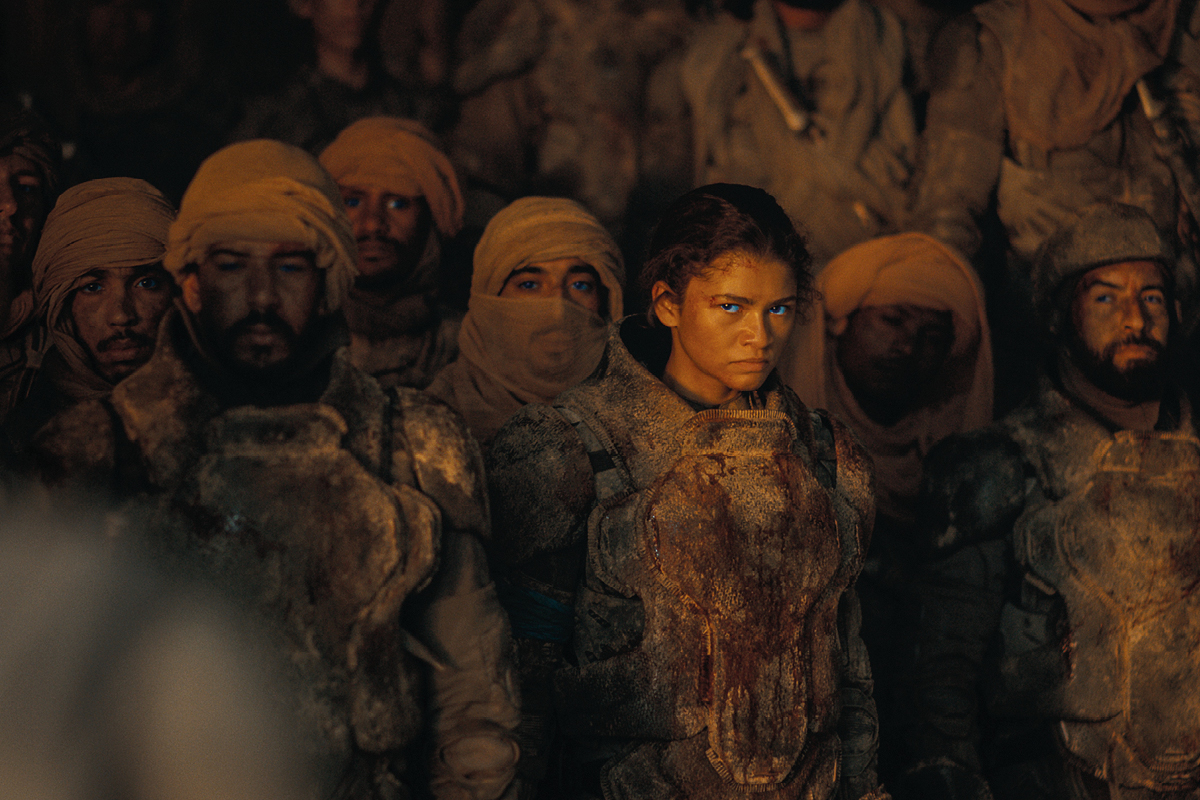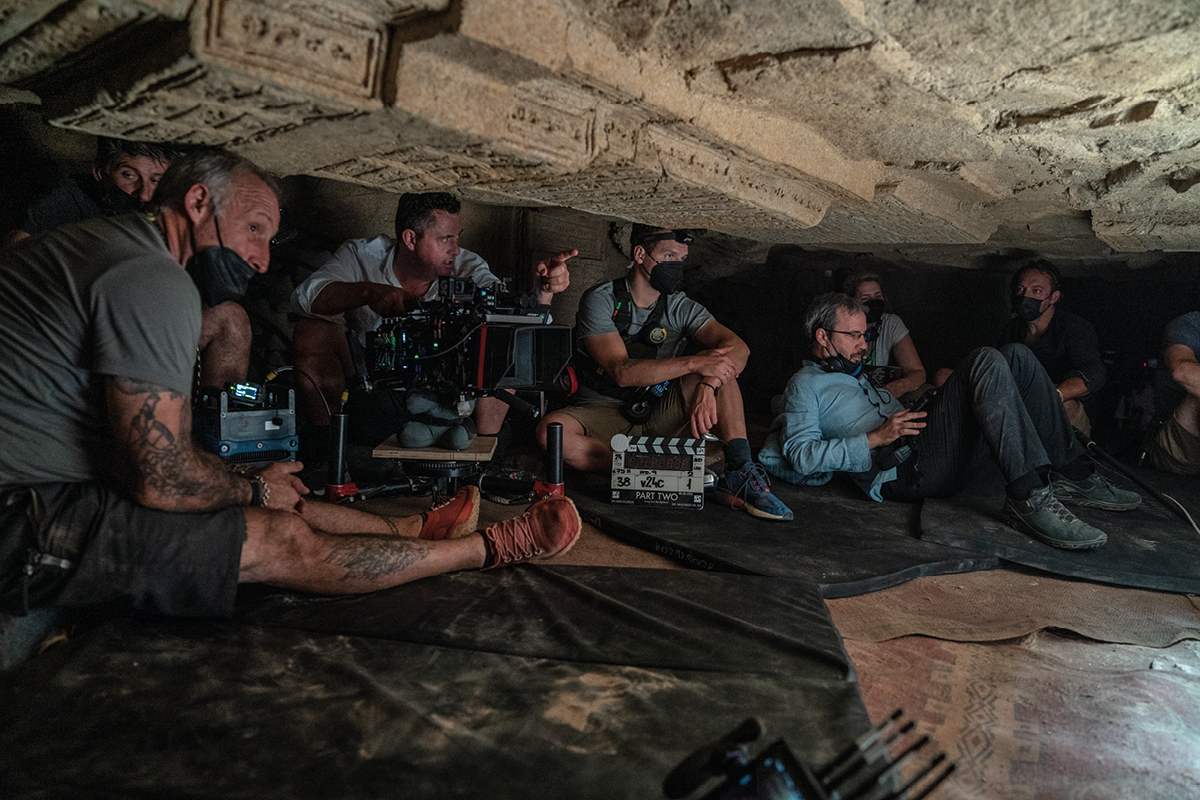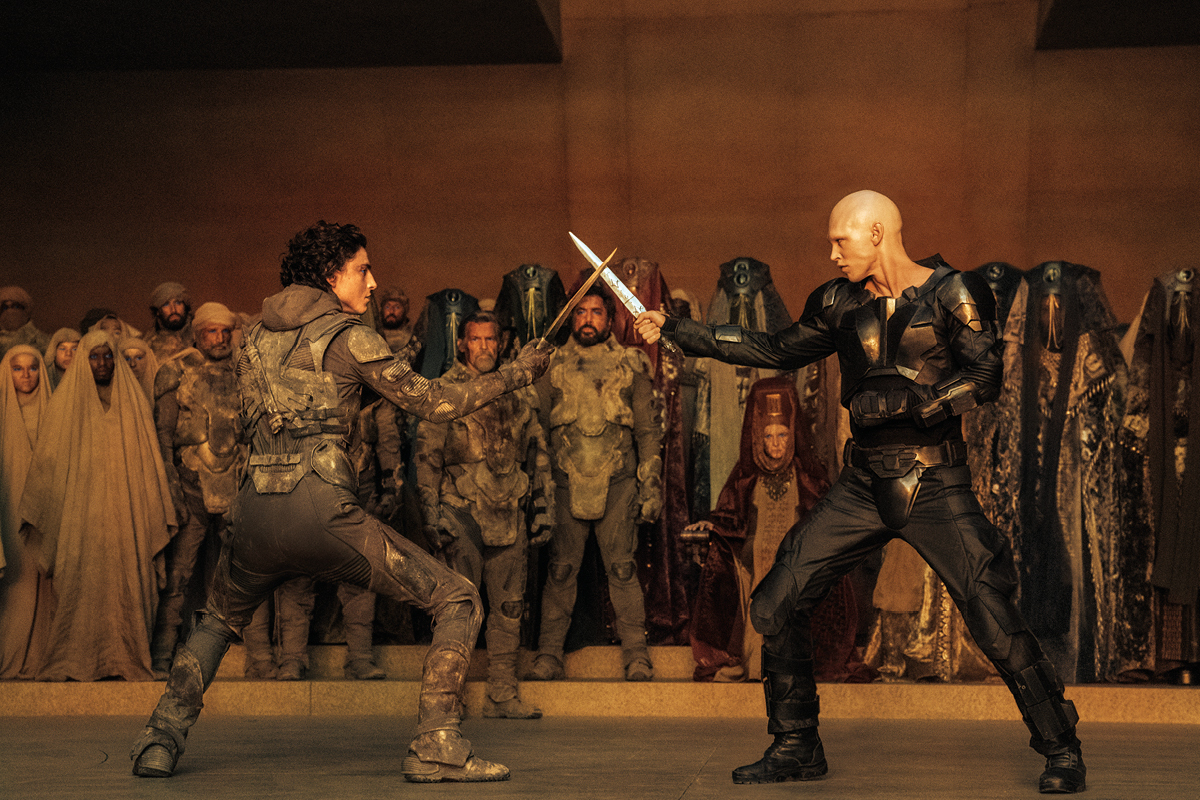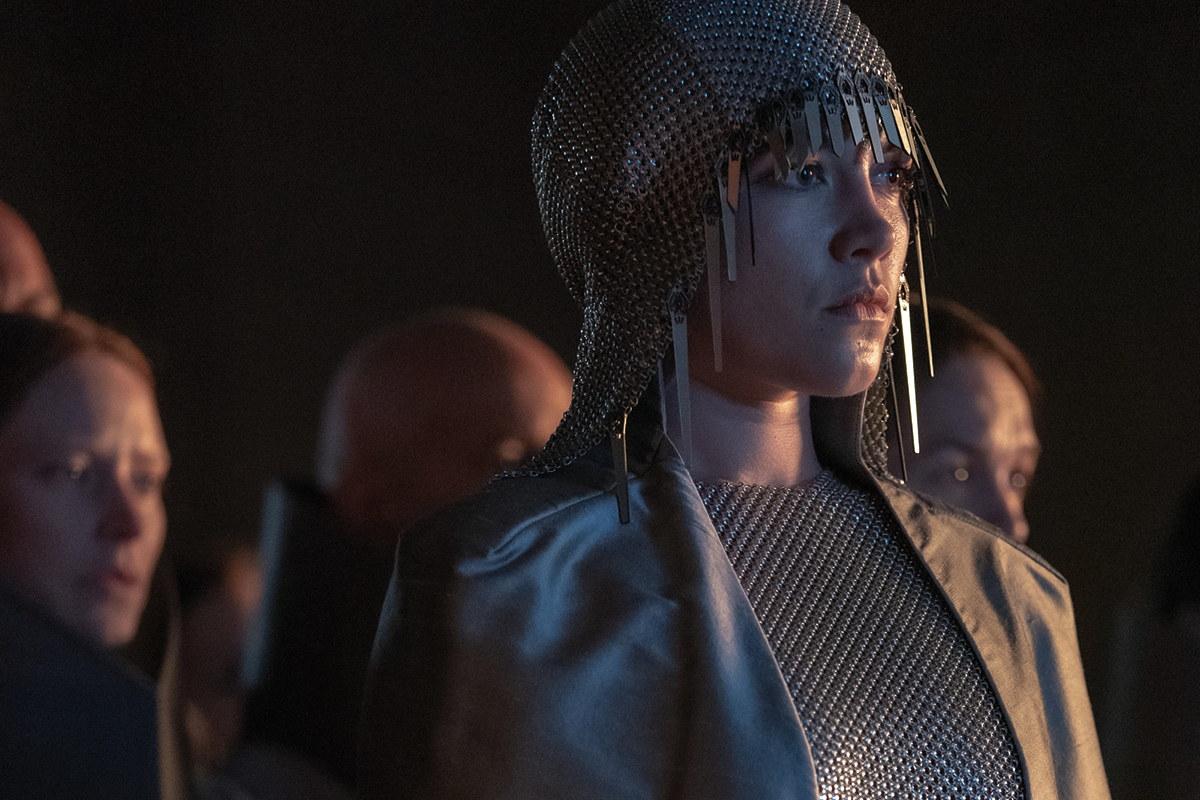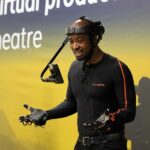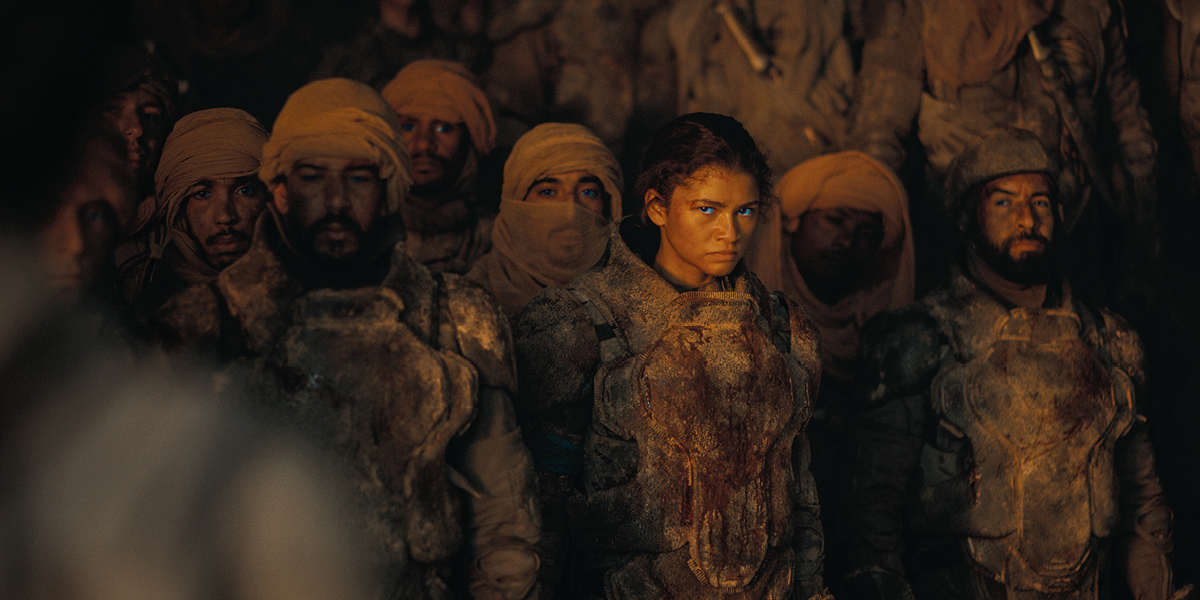
Dune 2
Posted on Apr 30, 2024 by Samara Husbands
The Sands of Time
Words Trevor Hogg Images Warner Bros
Epic sci-fi sequel Dune: Part Two is the year’s most successful cinematic release to date. Academy Award-winning cinematographer Greig Fraser, ACS, ASC reveals the secrets behind this sandblasted spectacle
Returning for the sci-fi sequel Dune: Part Two – in which Paul Atreides (Timothée Chalamet) faces a choice between the love of his life and the fate of the universe – cinematographer Greig Fraser, ACS, ASC saw an opportunity to expand the visual language of this smash-hit franchise.
“The images and characters have become more intimate than Part One,” he begins. “There, we were starting the journey and building a relationship as an audience member through these characters. We felt like we could be emboldened in Part Two to be less conservative with our framing choices.”
Fraser, who won an Academy Award for his cinematography on the first Dune, says that knowing the film would be released in a variety of formats informed his creative decisions: “There are instances in Part Two where we were super close. We knew we were going to IMAX too, and you would be sitting in the cinema seeing Timothée Chalamet’s face the size of an eight-story building!” he laughs. “We made those choices as we wanted to get inside Paul Atreides’ head as a character. Also, we now felt like we had experienced the desert for what it was – and could be bolder with our choices of colour.”
A seasoned filmmaker whose other credits include The Creator and Rogue One, Fraser highlights Unreal Engine’s growing significance, describing it as a tool which becomes more indispensable with each production he works on. On Dune: Part Two, the game engine was deployed for planning desert sequences, which were pivotal to the film’s narrative.
The production schedule was structured with stage work in Budapest, Jordan and Abu Dhabi, and meticulous planning was imperative owing to tight schedule constraints – especially prior to shooting in Jordan. “We were on a real tight ship,” recalls Fraser. “We absolutely had to make our days count as there wasn’t any wiggle room to go over.”
Utilising Unreal Engine, the team conducted extensive light studies to precisely determine the sun’s positioning; especially crucial for scenes set amid intricate rock formations, such as the eclipse sequence. “That scene takes place over more than ten locations, so we had to be on the ball when it came to knowing what time we were going to shoot things, how long we were there for – and effectively planning,” he shares.
Past experiments with infrared light came in handy when depicting Giedi Prime, where House Harkonnen resides.
The revelation of removing the infrared lens filter from digital cameras – allowing for the capture of original infrared light – is a concept Fraser has been playing with for over a decade.
In Rogue One, infrared light played a significant role in the visual effects, though it was often imperceptible as it was employed for tracking markers, mattes and alpha channels.
“I’ve always known how cool it looks, so have been looking forward to finding the right application for it,” enthuses Fraser. “Denis [Villeneuve, director] told me he was thinking about doing this exterior in black & white because maybe the sun doesn’t record colour. I told him I had an idea I wanted to show him – and he loved it! I’m happy we got to do it. From a narrative perspective, it was 100% the right tool for the job.”
An iconic moment from the source material, which had to be executed to perfection, was Paul Atreides riding a sandworm. “I don’t know the last time you rode a sandworm, but it’s actually really fun, fast and scary!” grins Fraser. “We were rolling on that before we even started principal photography – it was clear we’d need a lot of time to film the sandworm ride sequence.
“It’s important to Paul’s journey, but more than that, it’s critical to the Dune story in general. If it didn’t quite work, or wasn’t as visceral as it needed to be, it could have let the movie down. Everybody felt that pressure.” Given that Steven Spielberg called the sequence one of the greatest things he had ever seen, it’s fair to say the team succeeded.
Getting the right quality of light was crucial in seamlessly integrating the different locations into a singular environment. “In Budapest, we built the back of a sandworm for Paul to ride on. But around it, we also built a dome that was made out of a sand-coloured wood in a similar colour to the sand dunes. Not dissimilar to what we did on Dune: Part One with the ornithopter scene, where the sandworm eats the harvester. If we had a different-coloured bounce, it would have affected the look significantly.”
Most of the footage was captured using a single ARRI ALEXA 65, with the ARRI ALEXA Mini LF also deployed for action sequences. “For the Baron’s box and exterior, we used a 3D rig because we shot with one camera in colour and one camera in infrared, so we could transition between normal colour and infrared seamlessly. The Mini LF was good for that,” explains Fraser.
On the glass front, spherical lenses were favoured over anamorphic. “Part of the change between films is that Part One was Paul before Arrakis; Paul before he sets foot in the environment, which had an anamorphic feel. It was interior, while the IMAX was exterior. Spherical opened up his world into an IMAX frame.
“We worked from a focal range around 40mm to 135mm, and made use of Moviecams and DNAs out of ARRI, as well as Iron Glass rehoused optics – the Helios and Jupiter lenses – in 37, 58 and 85mm. We employed a few long lenses from Canon, too.”
LEDs were heavily relied upon, especially Creamsource Vortexes, plus lights from Aputure and Digital Sputnik. “We have been talking to Creamsource about joining their Vortexes together for ages and I wanted a smart way to do it,” reveals Fraser. “They had indicated they were working on something – or were thinking about it – and I said ‘speed it up, send it to us and we’ll test it for you’.
“They sent us a prototype of the LNX System and it’s used to join all of the fixtures together,” he continues. “The first one we built was a 64-Vortex rig called the Vortex 512, because it had 512 pixels. It was quite fantastic as a big, powerful, punchy LED source.”
Also crucial was the filtration system, which took on a new importance in Part Two since lenses needed protection from the elements.
The crew opted for ND filters in front of their glass, since the ALEXA 65 doesn’t have in-built NDs. After testing a selection of top-quality filters, they opted for Formatt Hitech Firecrests, which Fraser describes as working great.
“I love the worm run,” states Fraser, reflecting on his favourite moments from the finished feature. “I love the harvester attack too, but also love the characterisation between Chani and Paul. It’s an intimate story, but at the same time it’s big, bold, grand and incredibly exciting.”
On top of basking in the critical and box-office response, another good thing about the film being out in the wild is having the press embargo lifted.
This came as a huge relief, according to Fraser. “I remembered that we finished the shoot down in Namibia with – spoiler alert obviously – Anya Taylor-Joy and we couldn’t tell a soul. I was talking to friends of mine who had worked on Furiosa not long after that and wanted to say ‘Anya is lovely and had a great time’. I couldn’t do it, I was having to keep the secret. Now I can tell the world!”
This feature was first published in the May 2024 issue of Definition.


